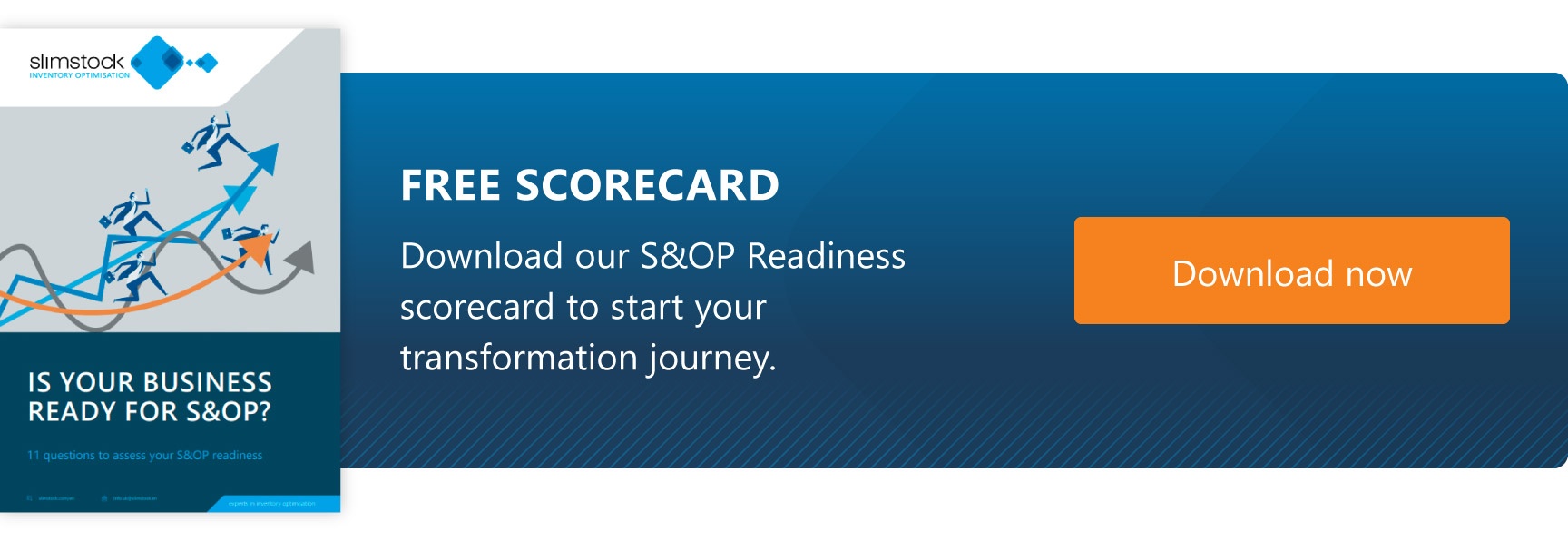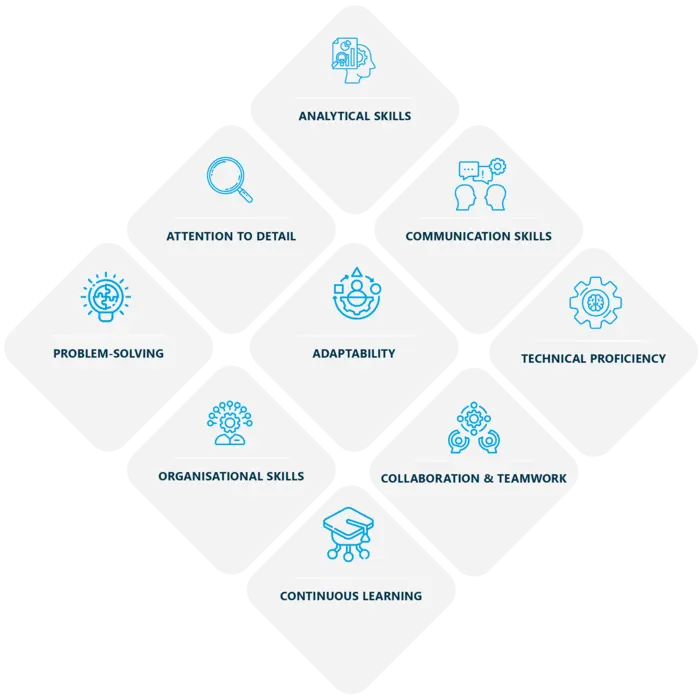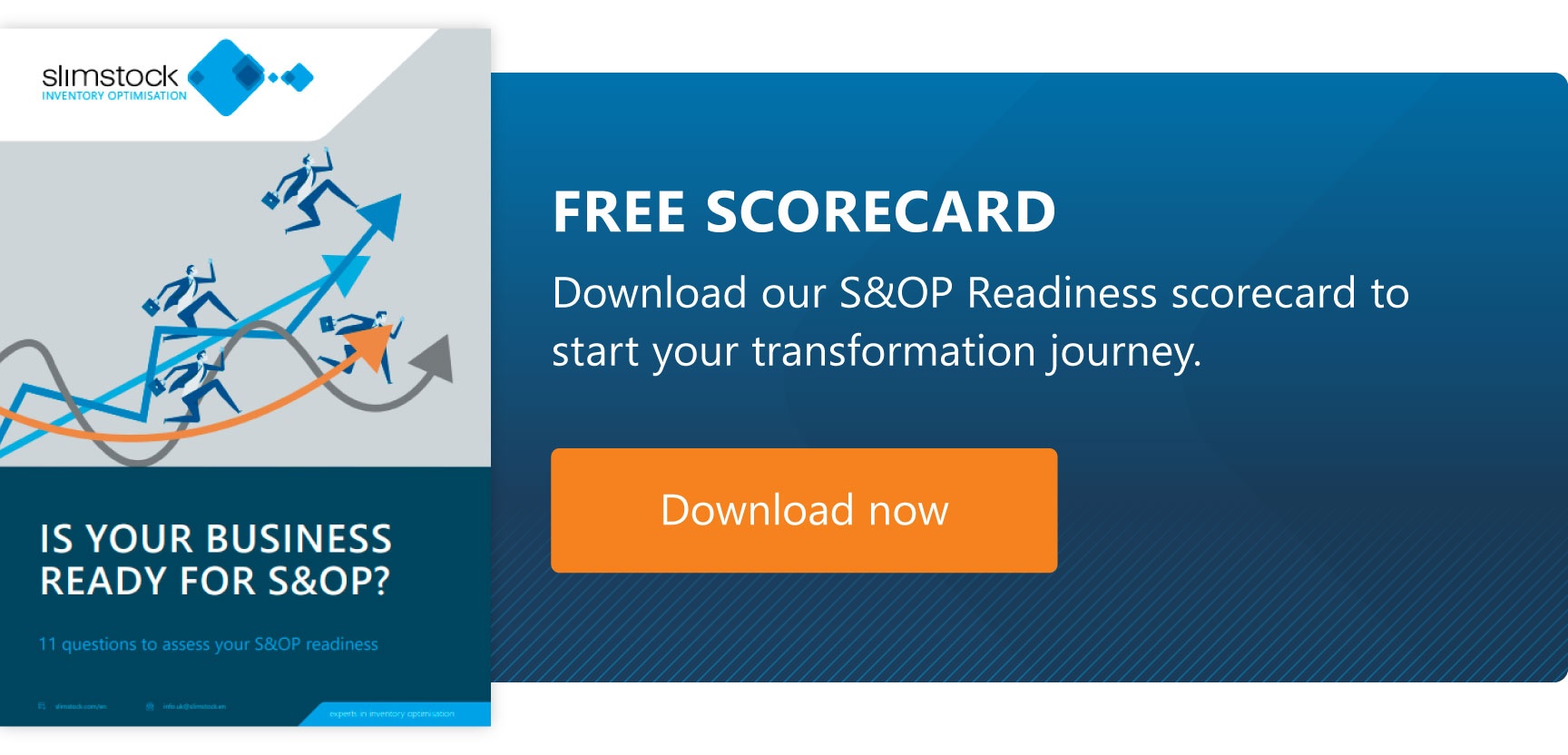The demand planner role is well established. But the emergence of new AI-powered supply chain tech, increasing volatility, and widespread talent shortages have amplified the importance of this critical position.
In this week’s blog, we delve into the evolving role of demand planner:
- How different does the demand planner role look today than it did 5 years ago?
- What are the main challenges and opportunities?
- What skills & knowledge do demand planners need to excel in this position?
Let’s start with the basics.
What Is a Demand Planner?
In its simplest form, a demand planner forecasts customer demand. Unsurprisingly, this is a crucial role if you’re to meet the expected desire for your products and services.
A planner’s forecasts will result in an incredible amount of data at your fingertips. In an ideal world, this data will be robust and formulated based on historical sales data, market intelligence, competitor analyses, and insight from your production, marketing and sales teams.
Using this information, your demand planning team is responsible for producing forecasts steeped in accuracy. The goal of a demand planner is simple: ensure that the company can meet customer demand effectively by aligning inventory levels with sales targets.
Therefore, identifying deficits and mismatches between stock and anticipated demand is a key aspect of the role.
What Should Your Demand Planner Do?
Utilising advanced forecasting techniques and software, your demand planner can model demand variability and uncertainty to create a robust picture of future demand. Your demand planning team are not so much detectives with a hunch, but rather an analysis team, propped up by statistical models to confirm or deny their hunches about anticipated demand.
Monitoring inventory levels is crucial to this. As is the constant adjustment of forecasts, and analysis of the strength of those forecasts. Monitoring will not only help your business optimise your inventory levels but also reduce the chance of stockouts and excess stock.
Both of which can be fatal if ignored.
Your demand planner should understand the potential demand for your products, meaning they play a pivotal role in ensuring supply meets this desire (while minimising risk of excess and waste).
To do this, they’ll need to track and evaluate forecast accuracy, identify areas for continuous improvement, and implement strategies to deliver this.
The visibility and insights your demand planning team create naturally feed into your product lifecycles and strategic forward planning for much longer timeframes.
Is the current demand going to remain stable indefinitely? Of course not. So when will it peter out? When will it surge? How will your competitors’ offerings impact it? Will new entrants to the market impact demand, and therefore the business? What about outside influences like shipping delays or the next pandemic?
The role of demand planners is only becoming more difficult in the face of increased global volatility. Giving them every helping hand to achieve their – and your – goals is a must. Therefore, the competencies of your demand planners must be reinforced by clever technology.
What Challenges Might Your Demand Planner Face?
The challenges of your demand planner, to put it mildly, are vast and complicated. The list below reinforces why the demand planning role is more difficult than ever.
These points should also illustrate why your expectations must be realistic and evolve as much as their deliverables.
Demand Volatility:
Fluctuations in demand are inevitable due to shifting seasonality, market trends, promotions, and unforeseen events.
Each of these makes accurate forecasting a huge challenge.
Data Accuracy and Quality:
The accuracy and reliability of data, from historic sales, market intelligence, and customer insights, is an essential focus.
Without reliable data, a reliable forecast is borderline impossible.
Supply Chain Disruptions:
Expect the unexpected.
Disruptions are just part of the day-to-day reality of the current supply chain landscape.
Supplier delays, transportation issues, or even natural disasters will have a huge impact on your planning and therefore the management of your inventory.
New Product Introductions:
Forecasting demand for new products or product launches can be a total unknown.
Historic sales data is typically limited. Customer demand can evolve rapidly. And the risks of waste are high. Therefore, formulating accurate predictions is a challenging but essential part of the new product introduction process.
Forecast Bias and Error:
Forecast bias is an inescapable part of the process.
Minimising errors will be an ongoing challenge for most companies, and any inaccuracies you face will lead to excess.
Excess inventory, stockouts, low customer satisfaction, and suffering profitability are direct results of poor forecasting models.
Market Dynamics and Competition:
Swift and unexpected changes in market conditions or consumer preferences will force demand planners to adapt quickly.
Forecasts must be adapted accordingly and without delay.
Cross-Functional Alignment:
Collaboration with sales, marketing, production, and other departments is non-negotiable.
It’s all well and good giving your planning team the best tools the world has to offer.
But if you demand planners work in an isolated, siloed way, they might as well not exist.
Complex Product Portfolios:
Managing demand for a wide range of products is difficult.
Every product has unique demand patterns, product life cycles, and SKU-specific complexities.
For the demand planner, the challenge lies is creating robust insights across a vast assortment.
Forecasting for Promotions and Events:
Different promotions, marketing campaigns, and special events will have wildly different results for different products.
To deliver profitable sales initiatives, accurate forecasting and seamless coordination with sales and marketing teams are pre-requisites for success.
Technology and Tools:
Leveraging new software, AI, analytics tools, and technology platforms will support your forecasting processes. But enabling effective data-driven decision-making requires ongoing investment and training.
What Skills Are Needed to Become a Demand Planner?
There’s every chance your demand planner has every skill listed below.
If they don’t, or it’s not evident they’re using these skills, it’s your responsibility to up-skill them, or offer training to give them the capability to succeed in the role.
Demand planners succeed when they utilise the following skills:
- Analytical skills
- Attention to detail
- Communication skills
- Problem-solving
- Adaptability
- Technical proficiency
- Organisational skills
- Business acumen
- Collaboration and teamwork
- Continuous learning
The likelihood is that all of these skills will be present in their everyday capacity. Some will be used more than others, but all should be present in their armoury so they can flex their prowess at the drop of a hat to consistently deliver now and in the future.
What Is the Typical Career Path of a Demand Planner?
If you’re reading this as a demand planner and wondering where the role might take you, there’s good news: not only will your role evolve, but so will the possibilities of future career endeavours.
You might advance to a demand planning manager, supply chain manager, or even supply chain director, where you can oversee larger strategic initiatives.
You might also consider transitioning into more specialised areas like category management or merchandising management.
In these roles, your focus will be on specific product categories or market segments. They’re much more refined roles but just as important to the wider business.
There’s also the possibility to grow into positions such as a purchasing manager, where you’ll be able to manage the intricacies of inventory planning and procurement. This will focus on one end of the demand department, which is crucial, as you probably already know.
Logistics management roles might interest you too. Managing the efficient flow of goods and materials is the very fabric of effective supply chain management.
Of course, you’ll also have the opportunity to explore roles beyond traditional supply chain roles.
Business analyst, quality assurance lead, or production control manager roles will leverage your analytical skills and operational expertise and give you a completely different career path, whilst making use of your career history.
To a degree, the world of your supply chain is your oyster. Great demand planners have an intrinsic overview of the entire supply chain, and how to maximise its efficiency.
You’ll have the flexibility to pursue diverse career paths and go in any direction that might interest you.
Final thoughts: How Is the Demand Planner Role Evolving?
The role of demand planning will increasingly require strategic engagement with the business. Making sure your demand planning team have the support of the wider business is therefore paramount.
The demand planner’s job is to provide insights and recommendations that ultimately enable business growth.
Advancements in technology will only accelerate your ability to transform your demand planning processes.
AI and machine learning-enabled algorithms will help you immeasurably in analysing large volumes of data and identifying complex patterns.
This should help you produce more accurate forecasts.
Changes in customer behaviour and market dynamics are unavoidable. Being able to react to them will set you apart. Advanced analytics techniques will help you gain real-time monitoring of demand signals.
As will predictive modelling, which can leverage big data analytics.
There’s a common prediction that the rise of AI will come for the jobs and livelihoods of many workers across the world. But in demand planning specifically, AI’s rise will only invigorate your ability to handle the growing complexity of the job.
AI can help your demand planning team with routine and mundane tasks by simply automating them.
Take scenario planning and simulation as an example. Using AI-powered simulation tools will help you run various scenarios and simulations much more quickly.
The potential impact of external factors are hard to guess.
There have already been huge advancements in technology to help demand planners.
And this trend will only continue into the future. The faster you can embrace AI, the better equipped you’ll be to turn your guesses into accurate predictions, and therefore accurate forecasts.
It’s an exciting time to be in the industry. And the role of demand planner will continue to evolve, as long as you’re happy to evolve with it.
Demand Planner FAQs
How has the role of demand planner evolved over the past five years?
The role of demand planner has evolved significantly over the past five years due to advancements in technology, increasing market volatility, and widening talent shortages.
What skills and knowledge are essential for excelling in a demand planner position?
Essential skills for demand planners include analytical prowess, technical proficiency, effective communication, and adaptability.
What are the primary responsibilities of a demand planner?
Demand planners are responsible for forecasting customer demand, monitoring inventory levels, adjusting forecasts, and collaborating with various departments.
What career paths can demand planners pursue?
Demand planners can pursue career paths such as demand planning manager, supply chain director, purchasing manager, or transition into specialized areas like category management or logistics management.
How is the demand planner role evolving, and what does the future hold for this profession?
The demand planner role is evolving towards strategic engagement with the business, leveraging advancements in technology such as AI and machine learning, and adapting to changes in customer behaviour and market dynamics.







